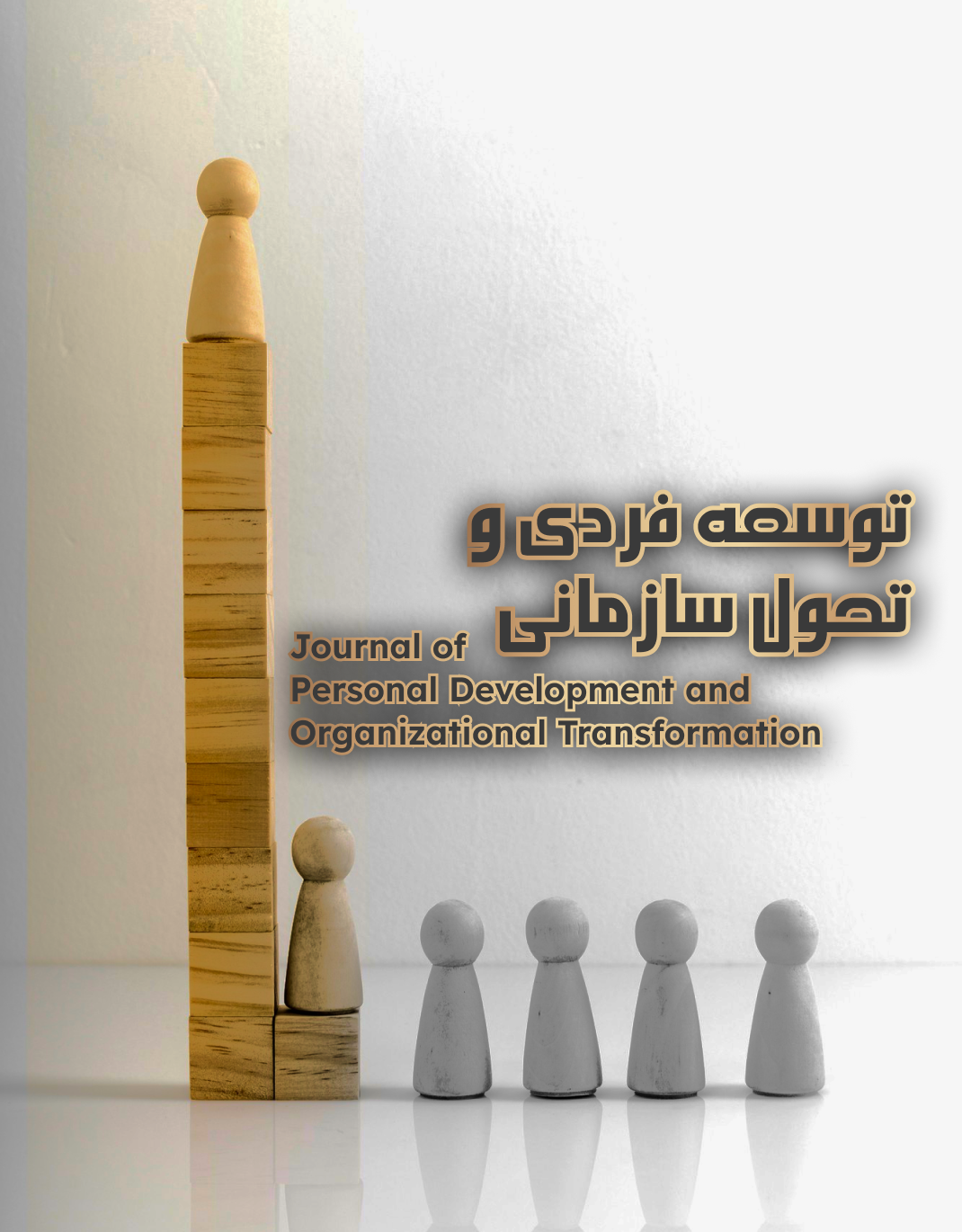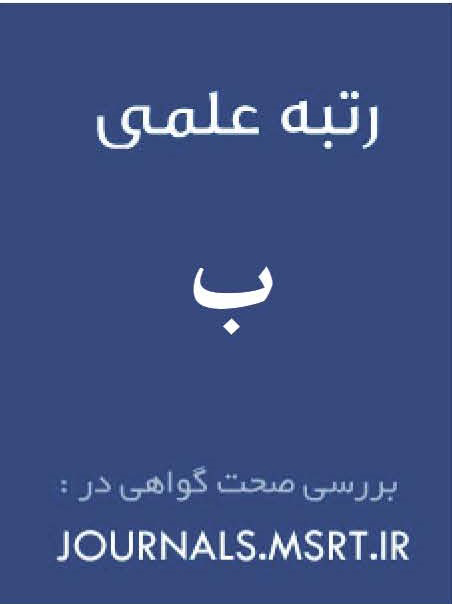Determining the Ability of Iranian Students Based on Their Response Style in the 2019 Eighth Grade TIMSS Science Assessment
Keywords:
Response styles, TIMs Exams 2019, People's abilityAbstract
The aim of this study was to determine the ability of Iranian students based on their response style in the 2019 Eighth Grade TIMSS Science Assessment. The statistical population of this study included all participants in the 2019 TIMSS Eighth Grade Science Assessment. The sample of this study consisted of all Iranian participants in the TIMSS Eighth Grade Science Assessment. In this study, different response styles, including extreme, middle, and acquiescent styles, and their effects on individuals’ abilities were examined. The data were analyzed using various Item Response Theory (IRT) models. The results showed that in 2019, the acquiescent response style (ARS) had a significant effect on test results and led to an increase in the variance of scores. Furthermore, gender differences indicated that boys tended to adopt extreme styles more frequently, while girls were more inclined toward middle styles. The findings of the study suggest that response styles can influence individuals’ abilities. These results may contribute to improving the design of standardized tests, reducing cultural biases, and providing solutions for more accurate assessment at both national and international levels.
Downloads
References
Aghaei, A., Madani, M. M., & Abdollahi, S. (2020). Examination of the Dimensions of the TIMSS Test and the Performance of Iranian Students in This Test. Third International Conference on Psychology, Educational Sciences, Social Sciences, and Humanities, https://en.civilica.com/doc/1163106/
Aleksankov, A. M. (2017). The Fourth industrial revolution and modernization of education: international experience. Strategic Priorities, 1(13), 53-69.
Bairamipour, A., Samsari, Z., & Hashemi, S. E. (2020). The Relationship Between Background Factors and Iranian Students' Mathematics Performance in TIMSS 2015. Educational Innovations, 19(3), 33-62. https://noavaryedu.oerp.ir/article_114613.html
Bolt, D. M., & Newton, J. R. (2011). Multiscale measurement of extreme response style. Educational and psychological measurement, 71(5), 814-833. https://doi.org/10.1177/0013164410388411
Bonjeer, T., & Vonkova, H. (2024). Relationships between response styles and the Hofstede and GLOBE dimensions of culture in a sample of adolescents from 33 countries. Cross-Cultural Research, 58(2-3), 180-207. https://doi.org/10.1177/10693971231203759
Dibek, M. I., & Cikrikci, R. N. (2021). Modelling of the Attitude-Achievement Paradox in TIMSS 2015 with Respect to the Extreme Response Style Using Multidimensional Item Response Theory. International Journal of Progressive Education, 17(2), 194-209. https://doi.org/10.29329/ijpe.2021.332.12
Dimock, M. (2019). Defining generations: Where Millennials end and Generation Z begins. Pew Research Center, 17(1), 1-7. https://www.pewresearch.org/short-reads/2019/01/17/where-millennials-end-and-generation-z-begins/
Falk, C. F., & Ju, U. (2020). Estimation of response styles using the multidimensional nominal response model: A tutorial and comparison with sum scores. Frontiers in psychology, 11, 72. https://doi.org/10.3389/fpsyg.2020.00072
Fishbein, B., Foy, P., & Yin, L. (2021). TIMSS 2019 user guide for the international database. https://timssandpirls.bc.edu/timss2019/international-database
Ismail, M. E., Samsudin, M. A., Amin, N. F. M., Kamarudin, N., Daud, K. A. M., & Halim, L. (2018). Contributing factors to science achievement in TIMSS Malaysia: Direct model and indirect model. International Journal of Engineering & Technology, 7(4.30), 423-428. https://doi.org/10.14419/ijet.v7i4.30.22354
Jeon, M., & De Boeck, P. (2016). A generalized item response tree model for psychological assessments. Behavior Research Methods, 48, 1070-1085. https://doi.org/10.3758/s13428-015-0631-y
Kalagarastani, A., Gorji, M., Gorji Daroonkalai, M., & Mousazadeh, S. M. R. (2018). The International TIMSS Test and the Performance of Iranian Students in Mathematics. Third National Conference on New Approaches in Education and Research, Mahmoudabad, https://en.civilica.com/doc/829932/
Khalilnejadi, A., Mohsenpour, M., & Moghaddam, A. (2024). Differential Functioning of Fourth-Grade Mathematics Test Items in the TIMSS 2019 Study by Gender. Educational Measurement and Evaluation Studies, 14(45), 7-26. https://jresearch.sanjesh.org/article_713306.html
Khorramdel, L., von Davier, M., & Pokropek, A. (2019). Combining mixture distribution and multidimensional IRTree models for the measurement of extreme response styles. British Journal of Mathematical and Statistical Psychology, 72(3), 538-559. https://doi.org/10.1111/bmsp.12179
Kupffer, R., Frick, S., & Wetzel, E. (2024). Detecting careless responding in multidimensional forced-choice questionnaires. Educational and psychological measurement, 84(5), 887-926. https://doi.org/10.1177/00131644231222420
Lee, Y. H., & Jia, Y. (2014). Using response time to investigate students' test-taking behaviors in a NAEP computer-based study. Large-scale Assessments in Education, 2, 1-24. https://doi.org/10.1186/s40536-014-0008-1
Meinck, S., & Brese, F. (2019). Trends in gender gaps: Using 20 years of evidence from TIMSS. Large-scale Assessments in Education, 7(1), 1-23. https://doi.org/10.1186/s40536-019-0076-3
Minaei, A. (2013). Assessing Construct Comparability and Analyzing Differential Item Functioning (DIF) and Differential Test Functioning (DTF) in the Eighth-Grade TIMSS 2007 Science Test Between Iranian and American Students. Educational Measurement Quarterly, 4(11), 113-151. https://jem.atu.ac.ir/article_2682.html?lang=en
Minaei, A., & Falsafi Nejad, M. R. (2010). Methods for Assessing the Unidimensionality of Items in Dichotomous IRT Models. Educational Measurement Quarterly, 3, 79-98. https://www.sid.ir/paper/214519/en
Mullis, I. V., & Martin, M. O. (2017). TIMSS 2019 Assessment Frameworks. https://timssandpirls.bc.edu/timss2019/frameworks/index.html
Mullis, I. V., Martin, M. O., Foy, P., Kelly, D. L., & Fishbein, B. (2020). TIMSS 2019 international results in mathematics and science. https://timssandpirls.bc.edu/timss2019/
Naeimi, S., Minaei, A., & Niyousha, B. (2023). Predicting Mathematical Self-Efficacy Through Self-Regulation in Students of Saveh City. Razi Journal of Medical Sciences, 29(12), 520-528. https://www.magiran.com/paper/2758450/the-predicting-mathematic-self-efficacy-with-self-regulation-strategies-among-students-of-saveh-city?lang=en
Piroozi, A., & Kazemi, M. R. (2022). Evaluation of Eighth-Grade Students' Performance in Fars Province in the Cognitive and Content Domains of Mathematics Based on the Results of TIMSS 2019. Mathematics and Society Journal, 7(4), 43-77. https://math-sci.ui.ac.ir/article_27399.html?lang=en
Pongsophon, P. (2023). Multilevel Analysis of Factors that Determine the Science Achievement of Fourth-Grade Students in TIMSS 2019. Science Education International, 34(2), 86-95. https://doi.org/10.33828/sei.v34.i2.2
Sahibzada, U. F., Jianfeng, C., Latif, K. F., Shafait, Z., & Sahibzada, H. F. (2022). Interpreting the impact of knowledge management processes on organizational performance in Chinese higher education: mediating role of knowledge worker productivity. Studies in Higher Education, 47(4), 713-730. https://doi.org/10.1080/03075079.2020.1793930
Tsupros, N., Kohler, R., & Hallinen, J. (2009). STEM education: A project to identify the missing components. Intermediate Unit,
Tutz, G., & Berger, M. (2016). Response styles in rating scales: Simultaneous modeling of content-related effects and the tendency to middle or extreme categories. Journal of Educational and Behavioral Statistics, 41(3), 239-268. https://doi.org/10.3102/1076998616636850
Ulitzsch, E., von Davier, M., & Pohl, S. (2020). Using response times for joint modeling of response and omission behavior. Multivariate Behavioral Research, 55(3), 425-453. https://doi.org/10.1080/00273171.2019.1643699
Wang, L. H., Chen, B., Hwang, G. J., Guan, J. Q., & Wang, Y. Q. (2022). Effects of digital game-based STEM education on students' learning achievement: a meta-analysis. International Journal of Stem Education, 9(1), 1-13. https://doi.org/10.1186/s40594-022-00344-0
Wetzel, E., Carstensen, C. H., & Böhnke, J. R. (2013). Consistency of extreme response style and non-extreme response style across traits. Journal of research in personality, 47(2), 178-189. https://doi.org/10.1016/j.jrp.2012.10.010
Wiberg, M., & Rolfsman, E. (2019). The association between science achievement measures in schools and TIMSS science achievements in Sweden. International Journal of Science Education, 41(16), 2218-2232. https://doi.org/10.1080/09500693.2019.1666217
Wise, S. L., & DeMars, C. E. (2005). Low examinee effort in low-stakes assessment: Problems and potential solutions. Educational Assessment, 10(1), 1-17. https://doi.org/10.1207/s15326977ea1001_1
Yaftian, N., & Abbasi, F. (2024). Alignment of Fourth-Grade Published Mathematics Problems from TIMSS 2019 with the Content and Problems of Iranian and Japanese Mathematics Textbooks. Educational Innovations, 23(2), 7-31. https://noavaryedu.oerp.ir/article_195789.html
Zia Nejad Shirazi, A., Kouroshnia, M., Sohrabi, N., & Bogholi, H. (2022). Developing a Differential Equation of Individual Factors Affecting Performance in the TIMSS 2019 Fourth-Grade Test Among High- and Low-Performing Students. Research in Educational Systems, 16(58), 129-141. https://www.jiera.ir/article_167791.html
Zia Nejad Shirazi, A., & Qaltash, A. (2016). The Role of Changes in the Educational System on the Results of International TIMSS Eighth-Grade Exams from the Beginning Until 2015. International Conference on New Horizons in Educational Sciences, Psychology, and Social Harms, Tehran, https://en.civilica.com/doc/609977/
Downloads
Published
Submitted
Revised
Accepted
Issue
Section
License
Copyright (c) 2025 Fatemeh Azadi (Author); Asghar Minaee; Masoud Geramipour (Author)

This work is licensed under a Creative Commons Attribution-NonCommercial 4.0 International License.







